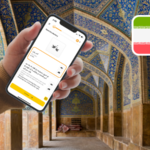If you’ve ever muttered the phrase “No Telugu on Mondly” in disbelief, you’re not alone. Picture this: a language enthusiast excitedly opens a new platform, dreams of mastering a new tongue, and then find that the language close to their heart is glaringly absent. For countless Telugu speakers and learners, this dream turned into a slight frustration when they discovered Mondly’s offerings. Why, in a world teeming with diverse languages and cultures, would such a significant language be overlooked? Let’s find out in this post!
The Telugu Language
Telugu, with its melodic intonations and storied past, stands proud as one of the world’s age-old treasures (about 3000 years old, according to some). Resonating through the corridors of time, Telugu continues to flourish as the predominant language in the Indian states of Andhra Pradesh and Telangana. Its lyrical cadence also finds a home in pockets of Karnataka, Tamil Nadu, and the union territory of Puducherry.
Today, this historic language lends its voice to more than 96 million native speakers globally, a number surpassing the populations of countries like France, Australia, or even the UK! Furthermore, the Telugu diaspora, with its vibrant communities in countries such as the USA, Asia, and Canada, ensures that the beauty of Telugu is heard far and wide, far from its South Indian roots.
The rich tapestry of Telugu’s history, its vast literature, and its profound cultural footprint earned it the prestigious title of “classical language” in India. With this recognition, Telugu joins the esteemed echelons of languages like Odia, Tamil, and Kannada, each celebrated for their unparalleled heritage and timeless relevance in the tapestry of world languages.

Where Is Telugu Spoken?
Telugu, often referred to as the ‘Italian of the East’ due to its melodic nature, emanates from the southern part of India but has resonated far beyond its geographic origins. Here’s a glimpse into the regions and corners of the world where this mellifluous language finds its voice:
- Andhra Pradesh and Telangana: Telugu’s heartland lies in the southern regions of India. As the official language of the states of Andhra Pradesh and Telangana, Telugu reverberates through cities, towns, and villages, weaving a linguistic tapestry that binds its people across both states.
- Neighboring Indian States: Apart from its dominant presence in Andhra Pradesh and Telangana, Telugu-speaking communities have made their homes in neighboring Indian states. Areas bordering these states, such as the eastern parts of Karnataka, pockets of Tamil Nadu, and parts of Chhattisgarh, also have significant Telugu-speaking populations.
- Overseas Communities: The voice of Telugu has traveled across oceans and continents. With the Indian diaspora reaching global shores, Telugu-speaking communities have blossomed in countries far from their origin. The United States, for instance, has seen a burgeoning Telugu population, especially in states like California, Texas, and New Jersey. Beyond the US, countries like Australia, Canada, the UK, and several Middle Eastern nations also play host to vibrant Telugu-speaking communities.
Is It Difficult To Learn Telugu?
Navigating the journey of learning a new language often raises the question: “How challenging will it be?” For many aspiring linguists, diving into the depths of Telugu can evoke similar curiosities. As someone who has been trying to learn this language myself, here are a few things that I have noticed.
The script and pronunciation of this language can be pretty tricky for noobs like me. You see, Telugu has its own unique script, which belongs to the Dravidian family of languages. While its rounded characters might appear daunting to newcomers, many find its logical structure quite learner-friendly once they begin. The pronunciation, especially the melodic intonation of Telugu, can be a delight to the ears but may require some practice to master fully.
Additionally, I noticed that some words in Telugu may not have direct equivalents in English, making it essential for total beginners to immerse themselves in the culture to grasp the language’s essence. And that also brings me to one of the critical points I want to discuss: the lack of resources. Here in my home country, the Philippines, it’s impossible to find any books or even tutors who can teach this language. Due to this, I had to use outdated PDFs from the internet.
So for me, the answer is yes! Telugu is hard to learn, especially if it’s your first time being exposed to a Dravidian language like this. However, it’s also not impossible to reach a certain level of fluency here since one can easily use language learning apps.

Language Learning With Mondly App
Fellow language enthusiasts, gather round as we embark on a journey through the corridors of Mondly – the digital haven for over 70 million language learners around the globe. Since its release in 2014, Mondly has rapidly risen through the ranks to be recognized as one of the premier tools in the world of digital language education. In such a short span of time, it joined the ranks of top language learning apps like Duolingo, Memrise, and Ling! This platform boasts of transforming raw enthusiasm into linguistic prowess, making language learning not just effective but downright enjoyable.
The elegance of Mondly lies in its design – sleek, intuitive, and user-centric. It effectively leverages a melange of modern learning techniques to cater to different kinds of learners. Whether you’re the kind to get hooked on visual cues or someone who sways to the rhythm of auditory learning, Mondly has got you covered.
One facet of Mondly that never ceases to amaze is its innovative integration of augmented reality (AR) and virtual reality (VR) into the learning process. Picture this: mastering French while having a heart-to-heart with a virtual Parisian right in your study, or perhaps sharpening your Mandarin as you navigate a bustling, virtual marketplace in Beijing. Exciting? You bet!
But, amidst its vast array of languages and state-of-the-art features, there lies a noticeable void. The mellifluous tones and rich history of the Telugu language are conspicuously missing from Mondly’s repertoire. For a language that resonates with millions globally and carries a legacy spanning centuries, its absence on such a prominent platform is puzzling. Why might this be the case for Telugu on Mondly? Let’s delve into this.
Why Is There No Telugu On Mondly?
The lingering conundrum that’s as hard to ignore as a looming storm cloud: why, amidst its extensive library of languages, does Mondly not offer Telugu, a language deeply rooted in history and spoken by tens of millions? While the precise reasons for this conspicuous absence are not openly disclosed by Mondly, we can certainly venture some informed speculations.
Low Demand
At the heart of any business decision lies the age-old tug-of-war between demand and supply. It’s conceivable that Mondly, like other platforms, prioritizes languages perceived to have a more globalized demand – think Spanish, French, German, and Mandarin. While Telugu undeniably boasts a rich tapestry of culture and an expansive speaker base, these attributes might not yet have translated into significant global demand in the eyes of Mondly’s strategists.
Complexity Of The Language
While Telugu is celebrated for its melodic cadence and distinctive script, these very features might pose significant challenges in constructing a streamlined and intuitive course. The unique nuances of Telugu, its script, and grammatical constructs could demand intensive efforts in course development. While bringing onboard native Telugu experts can address the accuracy and authenticity aspects, the business logistics of such an endeavor might be perceived as complex.
Business Strategy
In the fiercely competitive world of digital learning, strategic moves are vital. Perhaps Mondly is gauging the increasing interest in Telugu and planning a grand release in response to growing demand, or they could be focusing on other business priorities at the moment.
Regardless of these postulations, one truth remains unwavering: Telugu, with its profound legacy and vast speaker base, deserves recognition on global learning platforms like Mondly. Every language, Telugu included, offers a gateway into a distinct realm of culture, heritage, and human experience. Here’s hoping that platforms like Mondly soon recognize and act upon the growing chorus for the inclusion of languages like Telugu. For those eager to embark on the Telugu learning journey, shall we discuss the worthy alternative?
The #1 Best Telugu Learning App
As we tap our feet in anticipation for Mondly to join the Telugu tango, there’s already a superstar out there gracefully performing it. Let’s shift our gaze and offer a roaring applause to Ling, the supreme champion in the vast arena of Telugu language learning!
With Ling, your foray into the world of Telugu isn’t just a mundane academic pursuit. Oh no! It’s an exhilarating adventure teeming with enthralling lessons and ingenious instruments designed to bolster your vocabulary acquisition. Dive into a plethora of mini-games, from brain-teasing puzzles to stimulating fill-in-the-blank exercises, making every study stint feel more like a spirited game night.
And for that pièce de résistance? A chatbot companion awaits, transforming your learning endeavor from a drab monologue to an engaging heart-to-heart.
Believe me when I say this – Attaining proficiency in a language transcends the rote learning of words and grammar. It’s about embedding the language deep within your soul, and in this respect, Ling emerges as a virtuoso. Through its focus on active recall, Ling ensures that Telugu words and phrases don’t merely flutter through your thoughts but firmly plant themselves, ever-ready to be summoned at your will.
Start Learning Telugu With Ling
And there you have it! An exhaustive walkthrough on the wonders of the Telugu language and the puzzle of its absence from Mondly. But let’s remember, even as we wait (whether with poised patience or bubbling eagerness) for Mondly to introduce Telugu tutorials, our passion for language need not hit the pause button.
We’ve spotlighted the path to Ling, the unmatched maestro in the realm of Telugu language apps, which transforms the task of language learning into a joyous, immersive expedition. Now, it’s your turn to take up the mantle and embark on this thrilling quest.
Plunge into the vibrant world of Telugu literature, melodies, and cinema, all amplified by the Ling platform. And here’s the best part: Ling is available for FREE on both the App Store and Google Play Store. So, whether you’re an Apple aficionado or a devoted Android user, Ling ensures you’re in good hands.































































